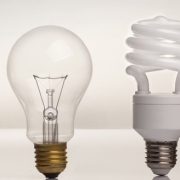If you spent 2018 mainlining misery about global warming, inequality, toxic politics or other anxieties, I’m here to break your addiction with some good news: The world got better last year, and it is going to get even better this year.
Poverty around the world is plummeting; half the world is now middle class; and illiteracy, disease and deadly violence are receding. These things don’t make headlines because they are gradual, relentless and unsurprising. That is why they are worth highlighting. The problems the world faces are far smaller than those it has already overcome and can be solved the same way: not by betting on miracles but by patiently applying knowledge and tools we already possess.
For most of recorded history humanity lived on the brink of starvation. As recently as 1980 nearly half the world lived in “extreme poverty,” that is, consuming less than the basic necessities, which the World Bank values at $1.90 a day in 2011 dollars, adjusted for the differing costs of goods and services between countries. The proportion of people in extreme poverty was projected to fall to an estimated 8.6% last year and, given the correlation between growth and poverty, is almost certain to drop further this year.
Rising incomes alone cannot capture how much better life has gotten. “Nathan Rothschild was surely the richest man in the world when he died in 1836,” economists Max Roser and Esteban Ortiz-Ospina wrote in 2017. “But the cause of his death was an infection—a condition that can now be treated with antibiotics sold for less than a couple of cents. Today, only the very poorest people in the world would die in the way that the richest man of the 19th century died.”
Mr. Roser is the founder of Our World in Data, a website that tracks the evolution of human welfare over the last few centuries. Scroll through the charts, articles and data sets, and you will be stunned by how much better life has become in just the last few decades: Child mortality, illiteracy and deaths from violence have all plummeted, and life expectancy has gone up.
The world first eradicated a disease, smallpox, in 1980. It could soon eradicate a few more: 2016 saw just 46 new cases of paralytic polio recorded; in 2017, there were just 25 new infections of Guinea worm, a painful and disabling parasitic infection. These victories come not through laboratory breakthroughs but the meticulous application of tried-and-true tools, such as vaccination and improved sanitation.
Much of the decline in poverty happened in China, where per-person income has risen 25-fold since China’s then-leader Deng Xiaoping inaugurated its economic reforms in 1978. India‘s economy, though, is now growing faster than China’s. If India can maintain its pace, the impact on global well-being will be just as momentous, given that India’s population should soon pass China’s.
As with disease, poverty is being eradicated not through technological miracles but basic rules of growth: Invest more in your human and physical capital, open yourself to markets and trade—that’s right, globalization is good—and incomes will rise.
Allow this growth to continue long enough, and something else momentous happens. As of September, more than half the world—3.8 billion people—are middle-class or rich, Homi Kharas of the Brookings Institution and Kristofer Hamel of World Data Lab found. They define middle class as consuming between $11 and $110 a day, in 2011 dollars adjusted for varying costs between countries. At this level, households devote ever more of their incomes to discretionary items such as motorcycles, refrigerators, movies or vacations.
Money and well-being aren’t the same, but Mr. Kharas and Mr. Hamel note that moving from poor to middle class does correspond to a big jump in happiness and much greater demands on governments to deliver affordable housing, education, health care and safety.
If the world is getting so much better, why does everyone seem so miserable? Perhaps because in the U.S., life is improving more slowly than in poorer countries, and in some places it is getting worse. Yet for most Americans, life is getting better: Median incomes are rising, average health is improving, and violent crime, divorce and teen pregnancy are all trending down.
Perhaps it also feels irresponsible to celebrate the many ways the world is quietly getting better because it distracts from the fight against things that are loudly getting worse: polarized and authoritarian politics, deadly opioids, nuclear proliferation, and most of all, a warming climate—a consequence of all those new middle-class entrants burning fossil fuels.
Yet obsessing over such perils is how we’ll likely solve them. Take global warming: Public concern over climate change is rising in the wake of wildfires and floods. Some media reports last year made much of a federal assessment that a warming climate could leave the U.S. economy 10% smaller by 2100.
First, note that if growth continues at 2%, gross domestic product would be 350% bigger by 2100, as opposed to 400%. Second, only one study is that dire: The consensus is more like a 5% hit, not 10%.
More important, the policy tools and technology exist to avoid those worst-case scenarios at a price considerably less than 5% of GDP; we only need the political will to apply them. Today that political will looks remote. But in 1980, the prospect that most of the world would one day be middle class looked even bleaker.
First published at wsj.com 1-2-19












